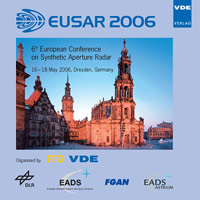Forest Classification Based on Multi-Baseline Interferometric and Polarimetric E-SAR Data
Konferenz: EUSAR 2006 - 6th European Conference on Synthetic Aperture Radar
16.05.2006 - 18.05.2006 in Dresden, Germany
Tagungsband: EUSAR 2006
Seiten: 4Sprache: EnglischTyp: PDF
Persönliche VDE-Mitglieder erhalten auf diesen Artikel 10% Rabatt
Autoren:
Lee, J. S.; Grunes, M. R.; Ainsworth, T. (Naval Research Laboratory (NRL), Washington DC, USA)
Papathanassiou, K. P.; Hajnsek, I.; Mette, T. (German Aerospace Center (DLR), Wessling, Germany)
Ferro-Famil, L. (University of Rennes, Rennes, France)
Inhalt:
In this paper, we evaluate the potential of combining polarimetric classification approaches applied to forest with multi-baseline coherences to increase the classification performance of forest types and growth stages. First, forest classes, obtained from the application of supervised polarimetric classification algorithms based on second order statistical properties and scattering properties of the data, are evaluated for their correlations with ground truth measurements of forest types and ages. For unsupervised classification, we use the combined Freeman decomposition and the Wishart classifier based on polarimetric data alone to obtain seed classes. This seed classes are then used as the input to the Wishart classifier based on the 6x6 coherency matrix for the single-baseline polarimetric interferometry SAR data, or the 12x12 coherency matrix for the dual-baseline data. We have found that the inclusion of interferometry greatly improves the classification accuracy. Multi-baseline E-SAR Pol-InSAR data from Traunstein test site and Bayrischer Wald are used for illustration.


